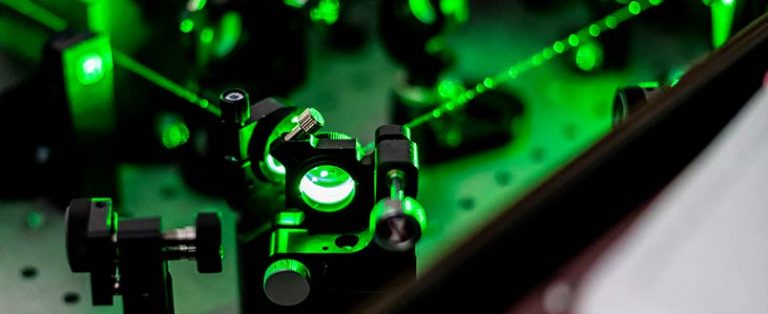In the sprawling landscape of laser technology, where photons dance with virtuous precision, helium emerges as the unsung hero, quietly wielding a multitude of roles within the manifestation of carbon dioxide (CO₂) lasers. Best known for its laugh-inducing properties and buoyant nature, helium often exists in the periphery of scientific discourse. However, when one scrutinizes the anatomy of the CO₂ laser, it becomes apparent that this noble gas plays an indispensable role, enhancing performance and demonstrating a capacity for refinement that extends far beyond its superficial whimsy. Through an exploration of helium’s multifaceted contributions to CO₂ lasers, we can appreciate the subtleties of laser operation and the underlying physics that govern these sophisticated devices.
To comprehend the significance of helium within CO₂ lasers, one must first delve into the architecture of these remarkable systems. At the heart of a CO₂ laser lies a gas mixture typically composed of carbon dioxide, nitrogen, and helium. Helium’s presence is not merely a passive one; it assumes a critical function in balancing the kinetic energies of other gas constituents. By serving as a buffer gas, helium mitigates the potential for ionization of the CO₂ molecules while simultaneously enhancing thermal conductivity. This interplay largely influences the overall efficiency of the laser, facilitating an environment conducive to stimulated emission rather than chaos and instability.
One of the most intriguing aspects of helium’s involvement in CO₂ lasers is its capability to expedite molecular relaxation processes. Following excitation, CO₂ molecules must transition to lower energy states before they can contribute to the vital mechanism of stimulated emission. Helium, with its low atomic mass and elevated thermal conductivity, assists in promptly dissipating energy from the excited CO₂ molecules, thus exponentially increasing the opportunity for subsequent emissions of coherent light. This relaxation process is akin to a ballroom of excited dancers swiftly regaining their composure, allowing the rhythm of the laser’s output to remain steady and robust.
The stability and longevity of laser devices are paramount—characteristics that helium dutifully endorses. The delicate balance of the gas mixture is vital in preventing the detrimental buildup of heat, which can lead to premature failure or degradation of the laser medium. By virtue of its high thermal conductivity, helium effectively prevents hotspots from forming within the active laser cavity, ensuring that the laser operates within its optimal thermal limits. Herein lies a fascinating parallel: just as a diligent conductor ensures that each section of an orchestra maintains its tempo and harmony, helium soldiers alongside its gaseous counterparts to maintain the operational symphony of the CO₂ laser.
Exploring further, helium’s contribution extends into the domain of laser output characteristics. The presence of helium can significantly influence the wavelength and the power output of CO₂ lasers. By tuning the proportions of helium within the gas mixture, the precise output characteristics can be modified to meet specific applications—be it in industrial cutting, engraving, or medical treatments. This malleable nature of laser performance underscores helium’s key role in the optimization of laser systems, allowing them to adapt to the diverse demands of different applications.
Moreover, we cannot overlook helium’s influence on operational longevity. The gas’s inherent stability strengthens the durability of the laser itself, thereby decreasing the frequency of maintenance and repairs. Unlike other gases that might present challenges such as corrosiveness or propensity to form undesirable byproducts, helium remains inert, consistently providing a pristine environment that fosters optimal laser function. This clarity allows CO₂ lasers to maintain their efficiency and reliability over prolonged periods, affirming helium’s role not just as a mere participant, but as a cornerstone of operational excellence.
In the realm of laser diagnostics and experimentation, the characteristics of helium enhance the measurement and evaluation processes as well. Helium introduces a level of spectral resolution that is invaluable in fine-tuning various laser parameters. Its presence enables researchers to examine laser behavior with heightened clarity, leading to better understanding and refinement of laser characteristics. In this intricate dance of gases, helium behaves as a facilitator, guiding the exploration of new techniques and innovative applications.
The metaphor of helium as a hidden hero rings particularly true when we consider how this noble gas often escapes the limelight. While components like CO₂ and nitrogen garner most of the accolades and attention, it is helium, with its muted identity, that perpetuates the harmony and coherence of laser operation. This silent, yet resolute demeanor draws a parallel between helium and the often-overlooked contributors to technological advancements. Just as many behind-the-scenes enthusiasts play pivotal roles in orchestrating successful endeavors, helium embodies this spirit in the domain of laser technology.
As the applications of CO₂ lasers continue to proliferate—spanning sectors such as manufacturing, medical, and research—it becomes increasingly integral to acknowledge the role helium plays in enhancing the multitude of functionalities these devices provide. In a conventional sense, helium may appear as a benign, playful gas; yet, a closer examination reveals its strength, versatility, and grace as a pivotal agent in promoting the development and efficiency of lasers. The journey through the realm of CO₂ lasers reaffirms a profound truth: those who operate silently yet proficiently often hold the key to success.
In conclusion, helium holds a position of considerable importance in the operation of CO₂ lasers, functioning as an essential facilitator in multiple capacities—from thermal management to optimizing the characteristics of laser output. As scholars and practitioners continue their relentless pursuit of innovation within this fascinating field, it is essential to recognize and appreciate helium’s hidden role, elevating this noble gas from mere curiosity to a vital protagonist in the ongoing narrative of laser technology. Through the lens of helium, we see not only the intricacies of gas dynamics but also the broader implications of collaboration, adaptability, and the unsung contributions that pave the way for advancement in science and technology.












